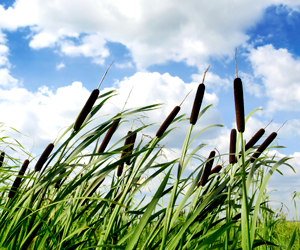 By Elizabeth Wheeler, Clean Wisconsin, Madison
By Elizabeth Wheeler, Clean Wisconsin, Madison
Jan. 4, 2012 – A proposal to advantage iron mining has been an extremely contentious issue in the Wisconsin legislature this session. Supporters tout iron mining as an opportunity for economic development and jobs creation in northern Wisconsin, while opponents worry that fast-tracking iron mining will result in harmful pollution and environmental degradation.
On Dec. 14, 2011, the Wisconsin Assembly Committee on Jobs, Economy, and Small Business introduced Assembly Bill 426, a bill that expedites the state environmental permitting process for iron mining. The bill makes sweeping changes that would affect permit applicants, local governments, neighboring property owners, citizens’ groups, and the state itself. These changes span a range of issues, from permit fees and tax revenues to permitting timelines and environmental standards as applied to iron mining.
The iron mining bill relaxes state permitting standards for iron mines
Wisconsin’s current mining law, Wis. Stat. chapter 293, treats all metallic mineral mines the same. The iron mining bill would amend chapter 293 to apply strictly to nonferrous metallic mining and would group ferrous mining under chapter 295 along with nonmetallic mining reclamation, oil, and gas. The 183-page AB 426 would significantly alter the current Department of Natural Resources (DNR) permitting process and requirements for iron mining, including these major shifts:

- Changes DNR review processes for considering a permit application:
- Requires DNR to make a decision on a permit application within 360 days. If DNR does not act, the permit is automatically approved. The current review process takes at least 2 ½ years.
- Downgrades the master hearing for all permits from a contested case hearing to a public hearing, thereby reducing opportunities to verify information about the project.
- Limits the number of times DNR can request additional information from the applicant.
- Changes financial responsibilities of iron mining companies and tax revenue allocations:
- Allows a mining corporation to request termination of its long-term financial responsibility after 20 years after the completion of mining on the site instead of 40 years.
- Divides the net proceeds occupation tax revenues equally between local governments and the state General Fund. Currently, 100 percent of this tax goes to local governments.
- Eliminates up to three $50,000 permit fees that currently go to local governments when a mining company submits a notice of intent to mine.
- Caps recovery of the state’s expenses related to permitting a mine at $1.1 million.
- Changes substantive environmental requirements:
- Exempts iron mining from regulations pertaining to acid mine drainage. Current law provides a higher level of scrutiny for metallic mining because of its potential to create acid mine drainage, a highly destructive form of water pollution that is caused by runoff from mining waste sites.
- Changes wetland mitigation rules for iron mines, allowing mitigation for highly sensitive wetlands that currently cannot be filled and reducing the amounts and types of mitigation required under current law. Current law requires wetland mitigation to occur on-site, whereas AB 426 would allow mitigation to occur anywhere in the state.
- Requires DNR to conduct a balancing test to determine whether the public benefit of a mine will outweigh any harm to public rights in waterways or to the environment when determining whether to issue permits related to high-cap wells for iron mining.
- Provides that in any conflict between this bill and any other state environmental law, this bill controls. Current mining law states that if there is a conflict between the mining law and any other state environmental law, the other law controls.
- Limits legal recourse for environmental damage:
- Removes contested case hearings as part of the permit appeal process.
- Removes state-level citizen suits for illegal environmental harm caused by the mining company.
Proposal creates conflict with the Great Lakes Compact and other federal laws
In testimony presented at the public hearing held on Oct. 14, 2011, DNR staff stated that they believe that the bill creates a conflict with the Great Lakes Compact by imposing a balancing test on DNR requiring DNR to approve water withdrawals if it finds that the public benefit of iron mining outweighs any adverse impact of the withdrawal.
Additionally, some federal permits will be required. Most notably, a federal wetlands permit – issued by the Army Corps of Engineers – will still require full-blown federal environmental review. Currently, the state and the Army Corps work together to develop a joint environmental impact statement. Expediting the state permit process for a project as large as an iron mine may stymie developers as they could be subject to the development of two separate environmental review processes. Depending on its location, a project may also be subject to a tribe’s review and approval.
Additional environmental legislation currently under consideration
In early fall 2011, Assembly Bill 421/Senate Bill 326 was introduced for navigable waterway permits that mirrored several themes present in the iron mining bill. Placement of structures, dredging and similar activities in or adjacent to navigable waters are regulated under Wis. Stat. chapter 30, and often require DNR permits. AB 421 proposes to allow DNR to create new general permits, reduce the timeline for permit approval, and institute presumptive approval for chapter 30 permits.
Part Gov. Walker’s “Special Session on Jobs” was a bill revising the wetlands permit process. This legislation is still being drafted, but remains a priority for the governor and the legislature.
Conclusion
The iron mining bill creates a legal structure to support the idea that iron mining is paramount to competing environmental or citizen interests in this state. As drafted, AB 426 affords mining corporations significantly less scrutiny in the state-level permitting process. Yet, the bill may not achieve the expedited process that proponents seek, because any iron mining proposal will still be subject to significant environmental requirements at the federal level.
About the Author
Elizabeth Wheeler, Pace University School of Law 2006 (focusing in environmental law), serves as the staff attorney for Clean Wisconsin, an environmental advocacy organization. Wheeler focuses in Clean Air Act and Clean Water Act issues as well as policy and legislative analysis.
